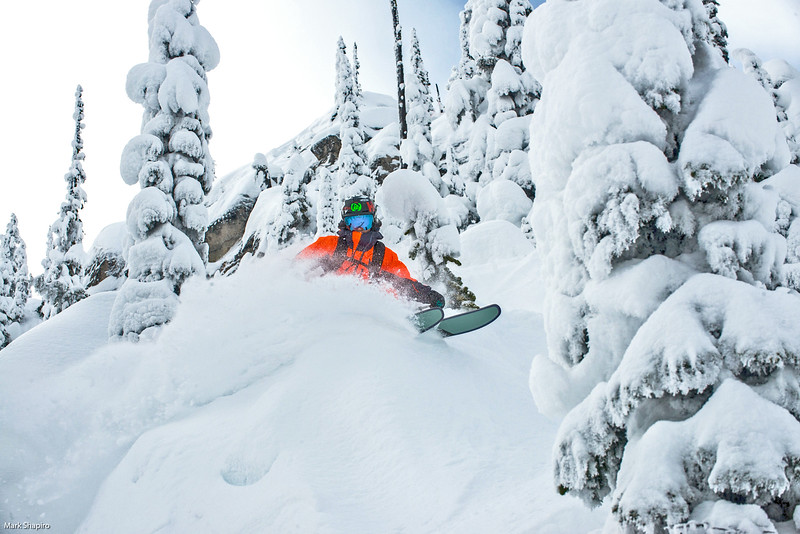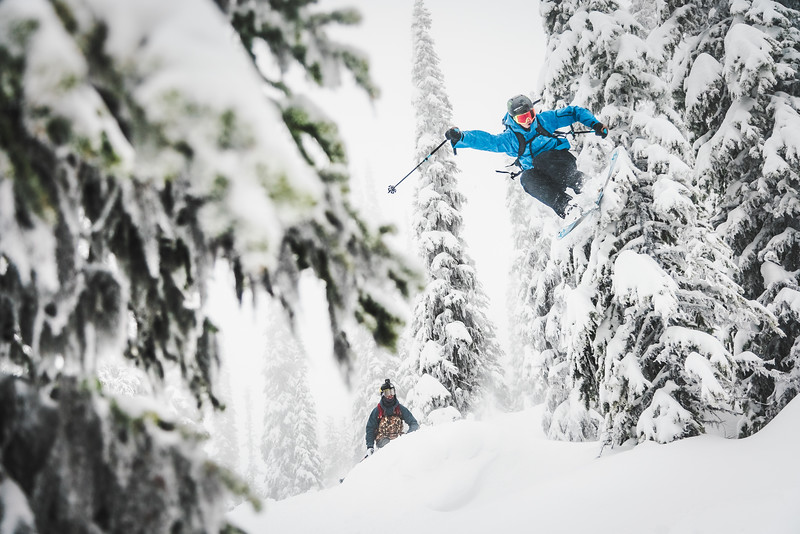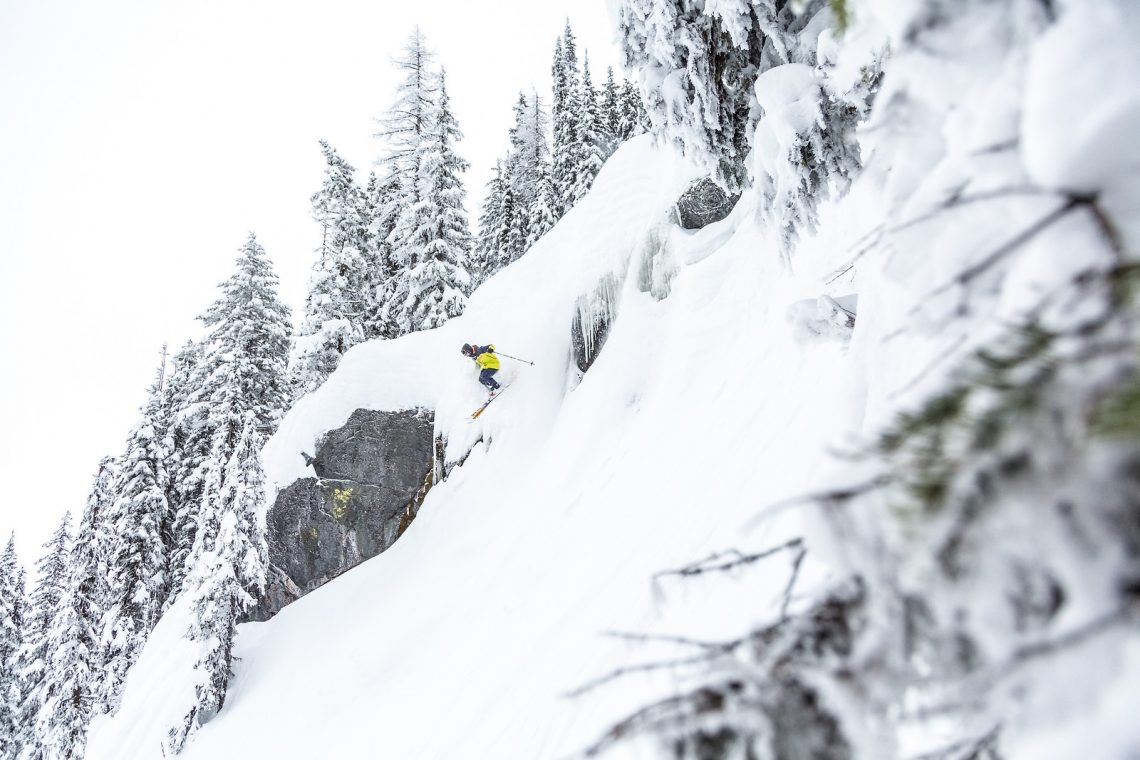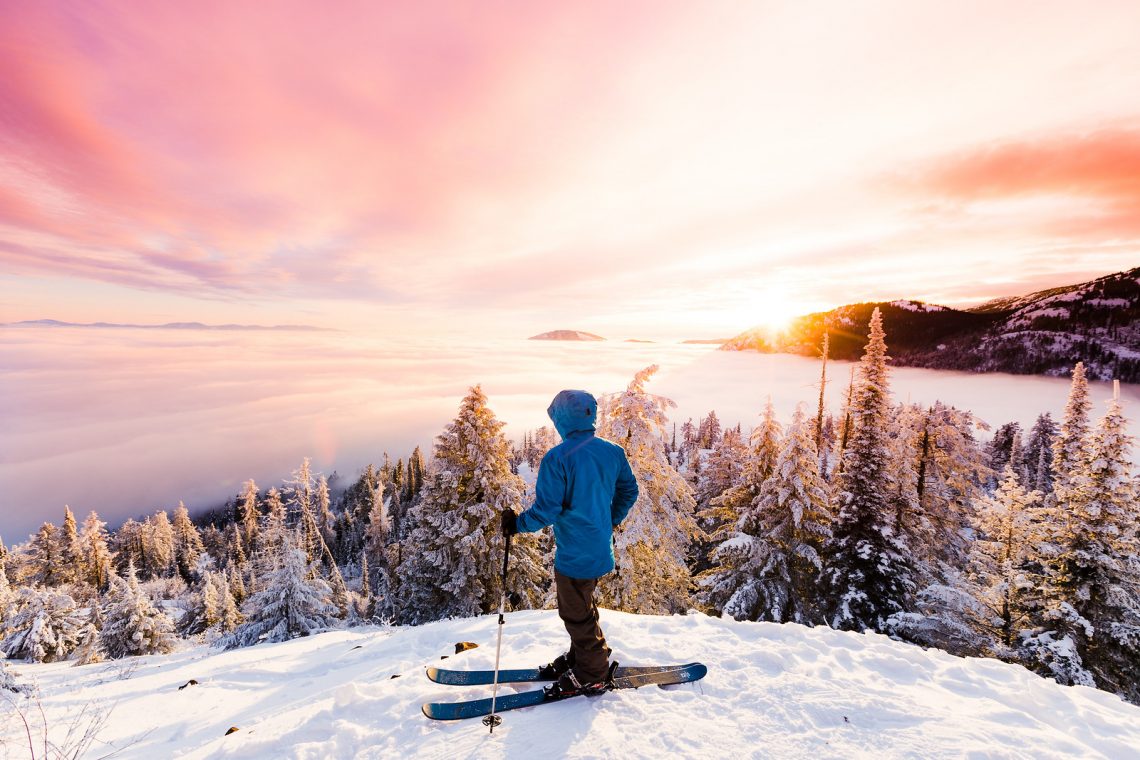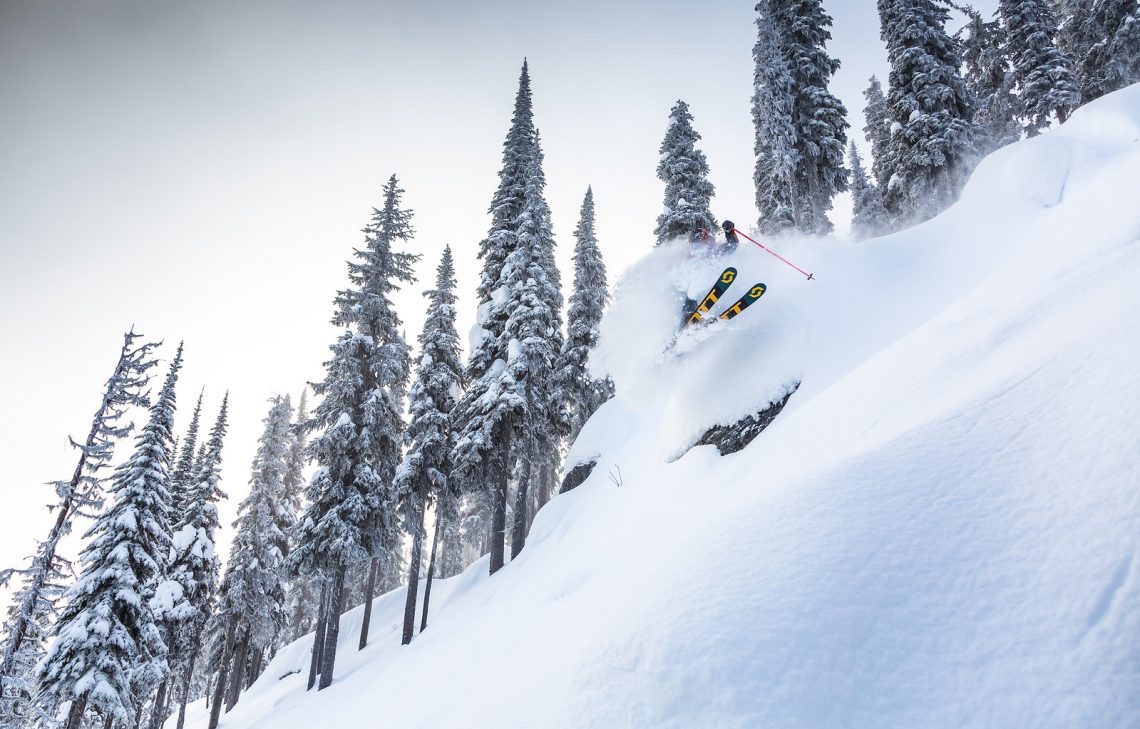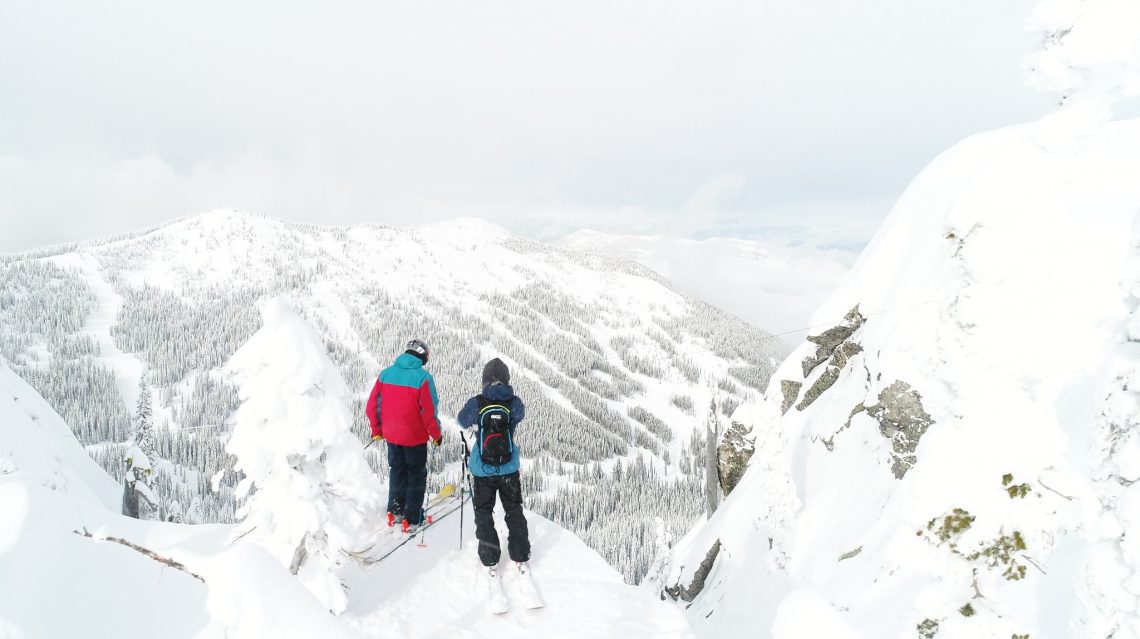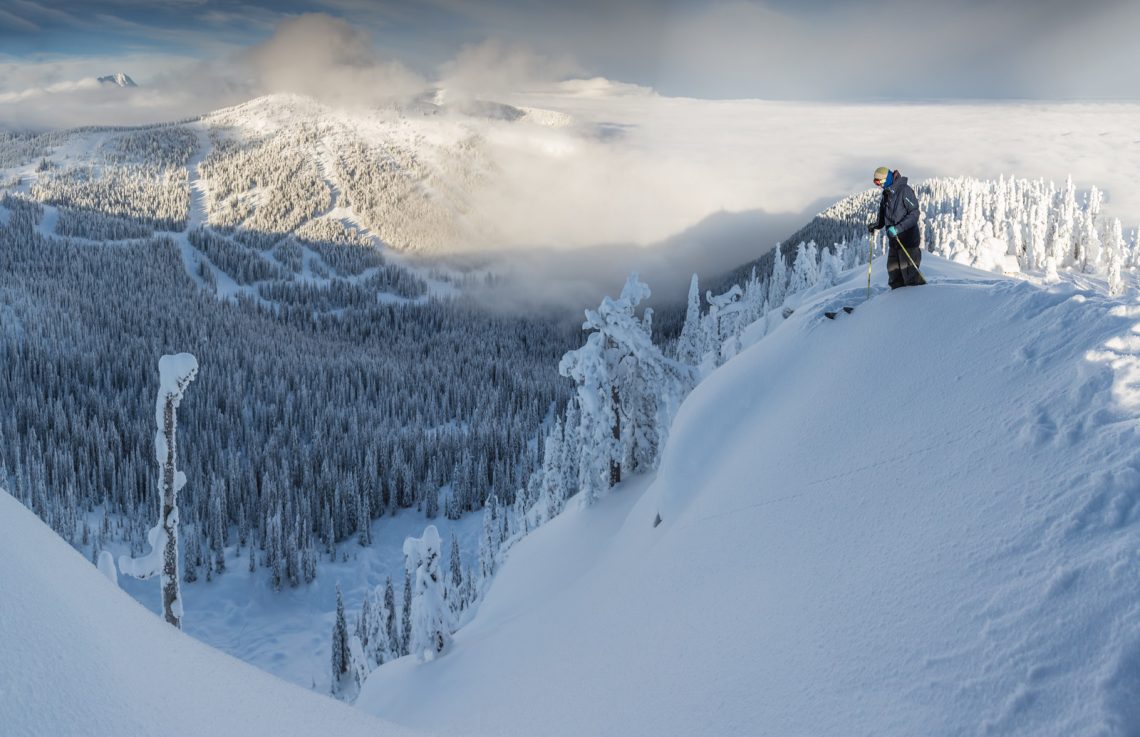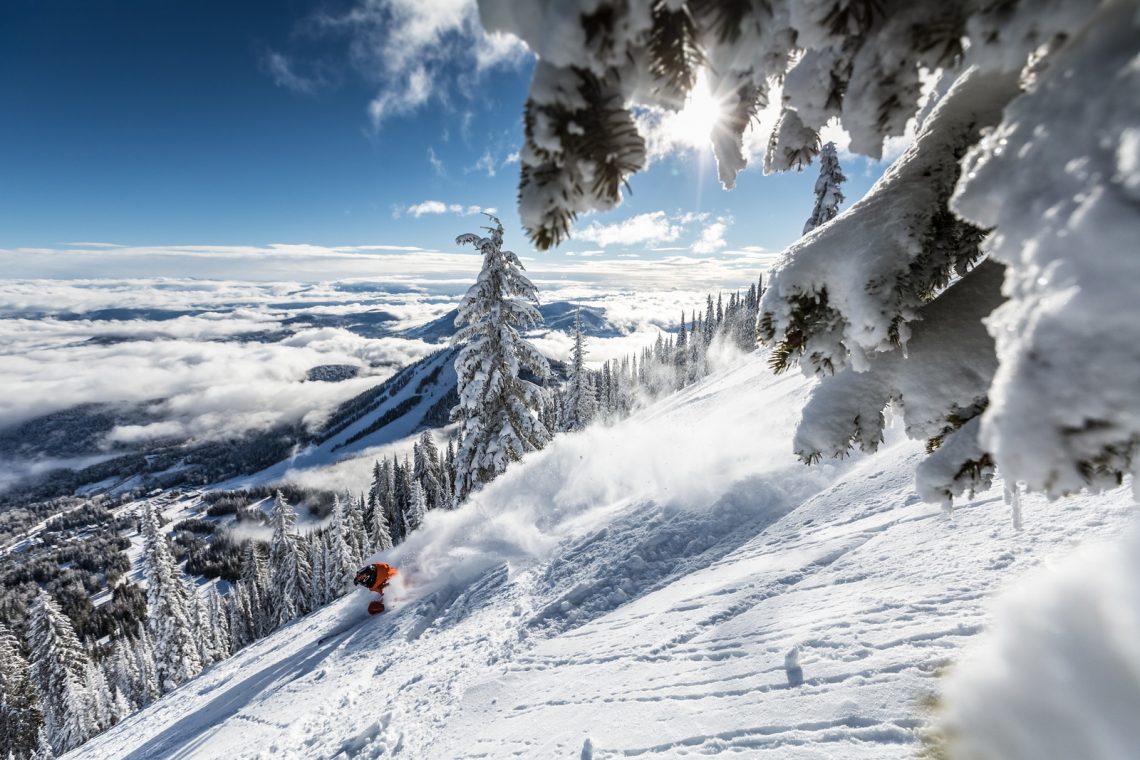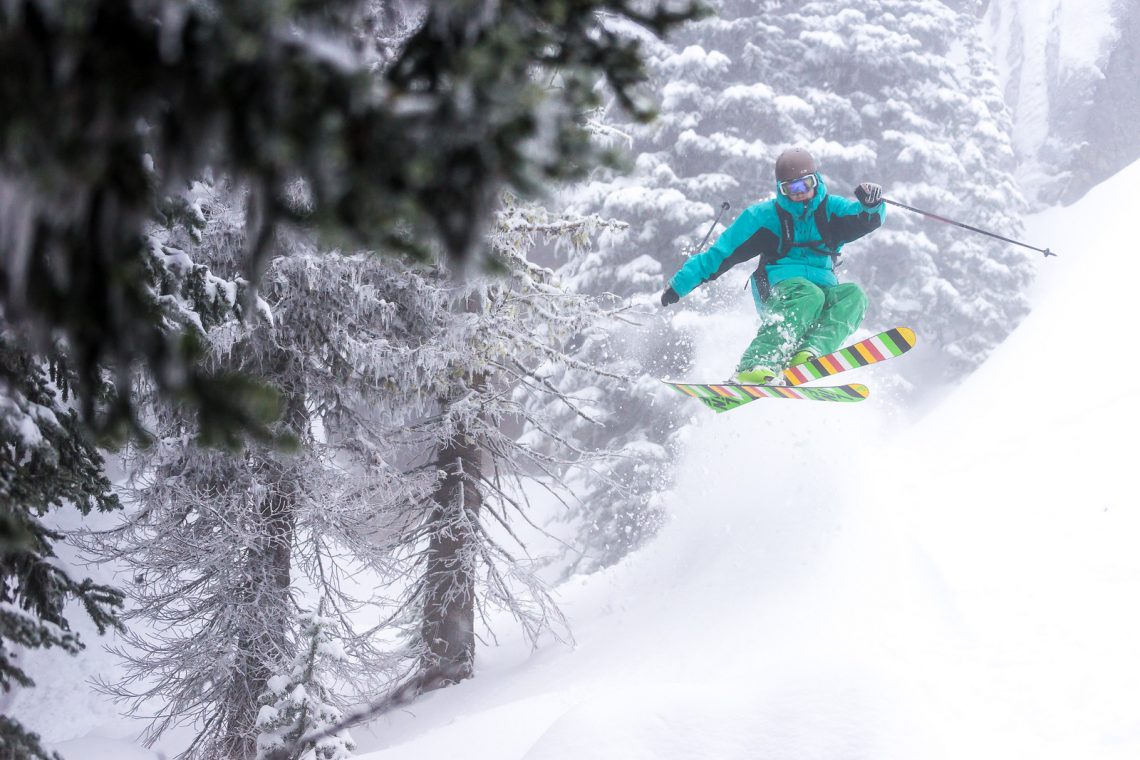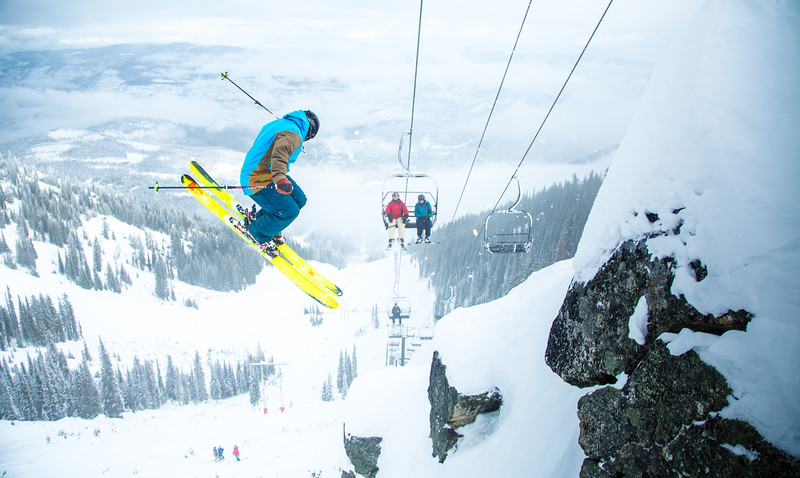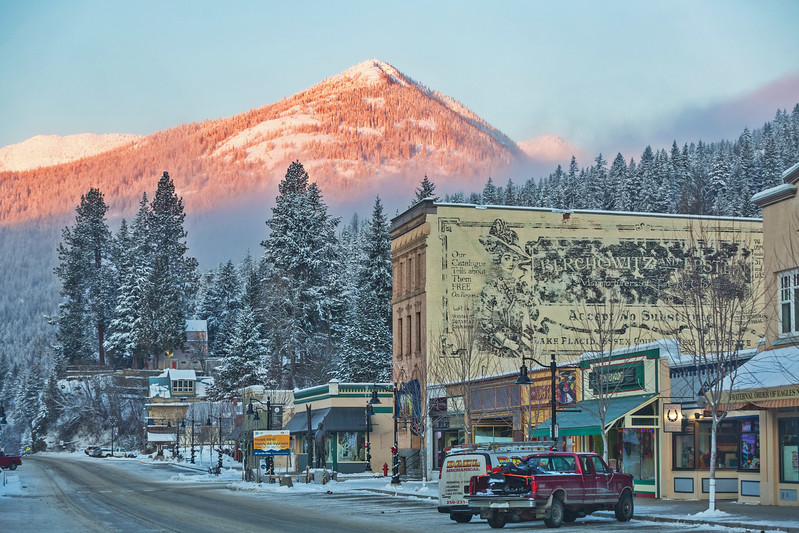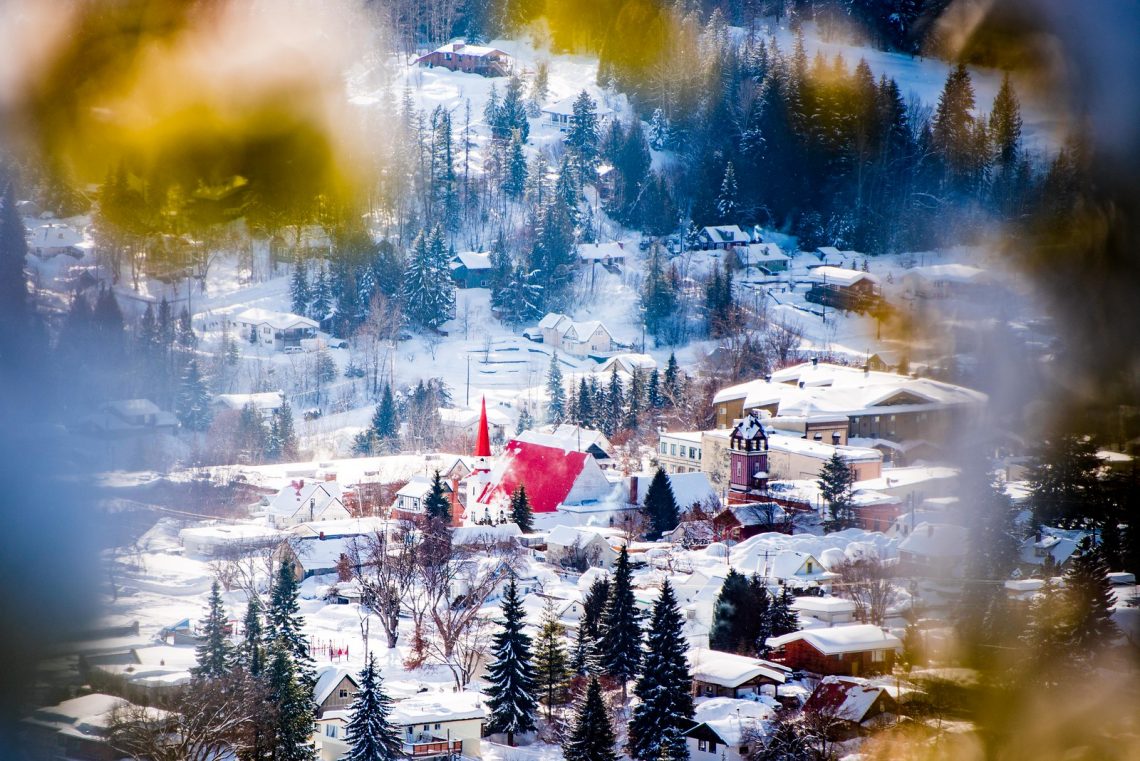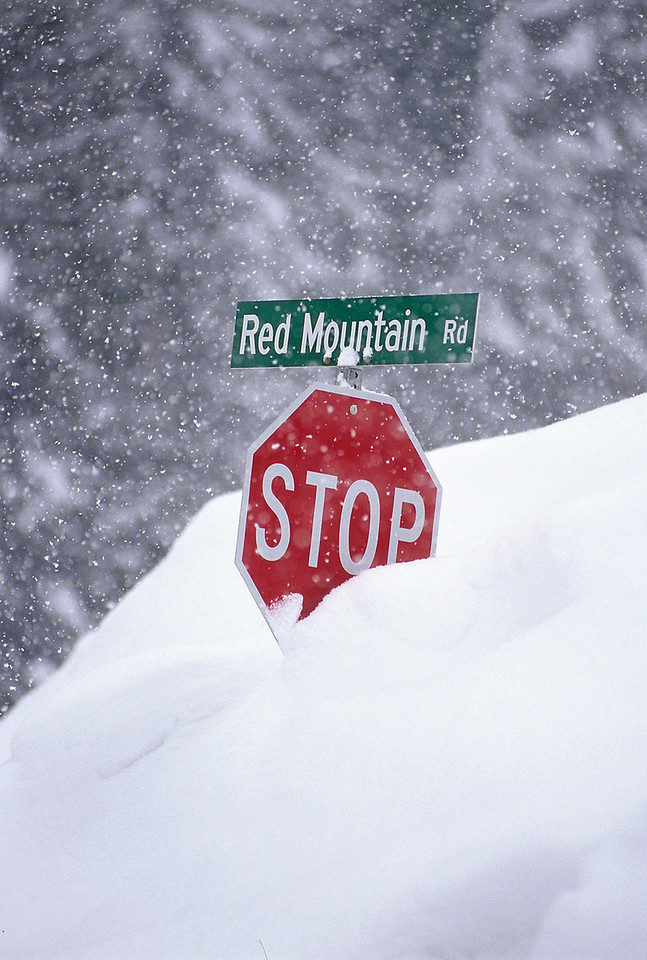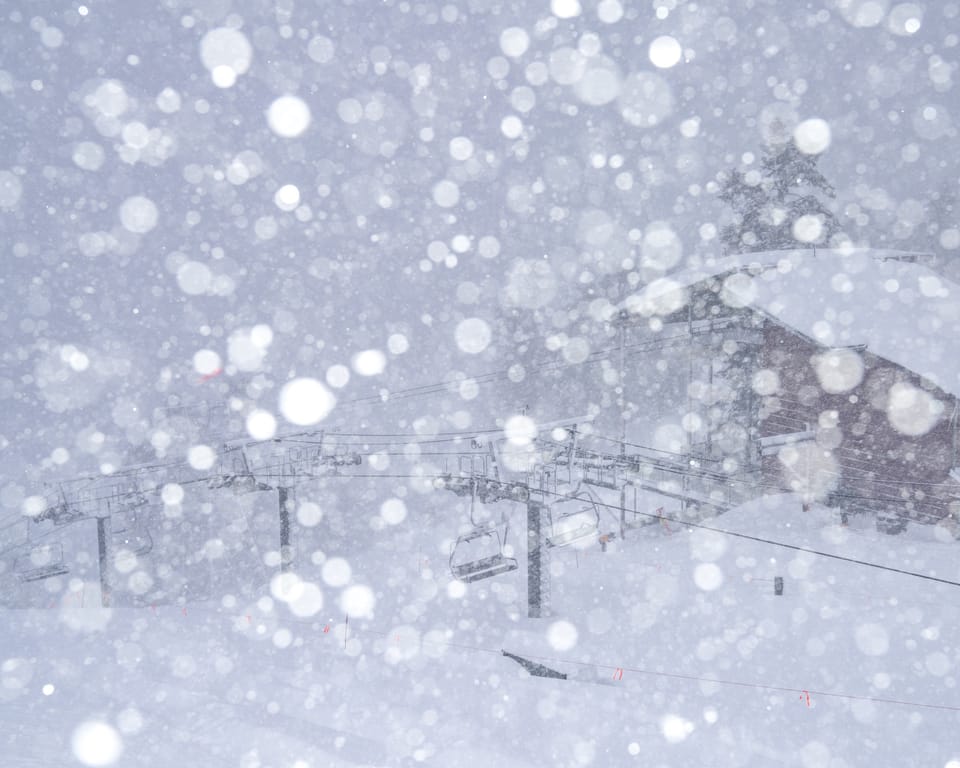IN THE RED

Alf Alderson enjoys some of the best skiing in British Columbia at Red Mountain.
There’s a popular anecdote you’ll hear in Rossland, a former gold mining town which sits beneath the small, holistic ski resort of Red Mountain in British Columbia. It tells of a local who once skied the ultimate steep, powdery line between Red’s tightly packed trees, emerging at the bottom as a gasping, snow plastered, beardy mess (beards are big in Rossland) to exclaim “That was the best run of my life”, after which he rushed back to the up the mountain to repeat his descent – but to no avail.
This wasn’t because he was eaten by bears or swept away by an avalanche – he just couldn’t find the same run again. For Red’s heavily wooded off-piste terrain is all but unmapped (the piste map indicates the vague whereabouts of named runs but there are few if any signs on the ground) and unless you know the exact two trees you snuck between to enjoy such a run, the chances of finding the same line again are minimal.
Ski Canada Magazine’s writers, who know a thing or two about gnarly skiing, have voted Red Mountain as having the country’s ‘Best Steeps’, ‘Best Powder’ and ‘Best Trees’ whilst Forbes Traveler regards the resort as being one of the top ten in North America for expert skiers; and Canada’s most famous female skier, 1968 Olympic gold medallist Nancy Greene, grew up here and reckons that after having learned to ski at Red “everything else seemed easy and not very steep”.
Her legacy has been carried into the 21st century by hot young local freeskiers such as Dane Tudor, 2009 Canadian freeski champion and Leah Evans, one of the country’s top big mountain skiers. Red’s reputation and their talents are built on the back of terrain described by at least one North American ski guidebook as ‘dangerous…and positively hazardous’; runs like Cambodia with its mandatory cliff drops (small cliffs but cliffs all the same), Third Slide, where you’ll easily lose your ski partner between the maze of trees; and the pick-up-sized bumps of Red Towers which are conveniently located underneath the rickety old Red Chair, so that those gliding serenely uphill can be entertained by you sliding uncomfortably downhill on your backside.
I’d always seen Red as a challenge that at some point in my ski career I had to face up to, and despite having first visited in a previous century it’s only in the last few years that I’ve felt I have the ability to really start to appreciate what’s on offer here.
For instance, my first descent on this particular visit came in the form of an off-piste black diamond run called Powder Fields. Mountain guide Roly Worsfold led the way between relatively open trees, powder hissing over the top of our boots as we descended through a classic British Columbian landscape where summit after summit of forested mountains seemingly marched north towards us from the US border like an immense blue-green ocean swell.
By heading away from the centre line of the run it was possible to find untracked powder stashes, although this search for the fluffy stuff can make skiing at Red a potentially solitary experience as I found the following day when I joined Roly and a couple of his mates to ski the more closely packed trees of Pale Face.
We all headed off on our own lines with an enthusiastic whoop or whistle to indicate our location as we snaked in and out of the trees. Eventually I stopped, mainly because a large conifer insisted that one of us should give way and slumped back into the snow to listen to the silence.
It was so quiet I could hear the swoosh of the snow slicing off the skis of the other guys as they dropped gracefully away beneath me, an occasional “Who-hoo!” echoing back off the trunks of a thousand trees, and then suddenly there was no sound at all other than my heavy breathing.
Neither could I see Roly and co. below me. So I got back on to my skis and began the process of threading my way between tree trunks until, like the local dude who skied the ‘best line ever’, I emerged at the bottom of Pale Face onto an empty cat track knowing I would never be able to find that exact line again.
There was no sign of the others, but more shouts soon brought us back together. We’d all become spread out over about four hundred yards, not one of us having come out in the same place at the bottom of the run – the search for your own best line and the hunt for hidden powder stashes ensures that tree skiing at Red often follows this format.
And in the last few years Red has rather silently grown bigger and bigger, first opening up a third ski hill Grey Mountain (the original hills are Red – of course – and Granite) and then Kirkup – it shouldn’t go unnoticed that this has in fact been the largest expansion of any North American ski resort in some four decades.
And on Kirkup you can go cat skiing for just ten Canadian dollars. Elsewhere in the world this would cost you hundreds of dollars. Fair enough, your ten bucks will get you just one ride, but it’s quite possible to get in eight or more runs a day, which is much the same as you’d get in a regular cat ski operation for three times the price.
Each time you hit the pow via the cat you’ll be skiing with just the twelve other passengers so it takes ages for the terrain to get tracked out and pretty much ensures that wherever you choose to ski you’ll have it to yourself.
Perhaps the only downside is that the cat operates on a ‘first come, first served’ basis so you have to wait in line for your ride, but Red is such a quiet ski hill that you rarely have to wait for more than 20 minutes max.
There are also the options of ski touring on neighbouring peaks, day trips to the equally hard core ski hill of Whitewater, and local cat and heliski operations if your wallet is feeling heavy.
Not a sensation I can say I’ve ever had – but then I’ve been cat-skiing at Red Mountain for ten bucks, so who cares…?
Red Mountain www.redresort.com

